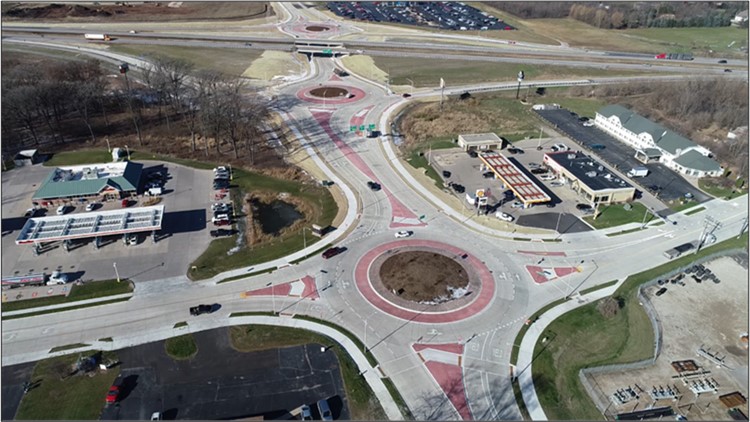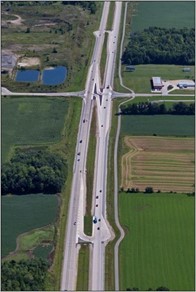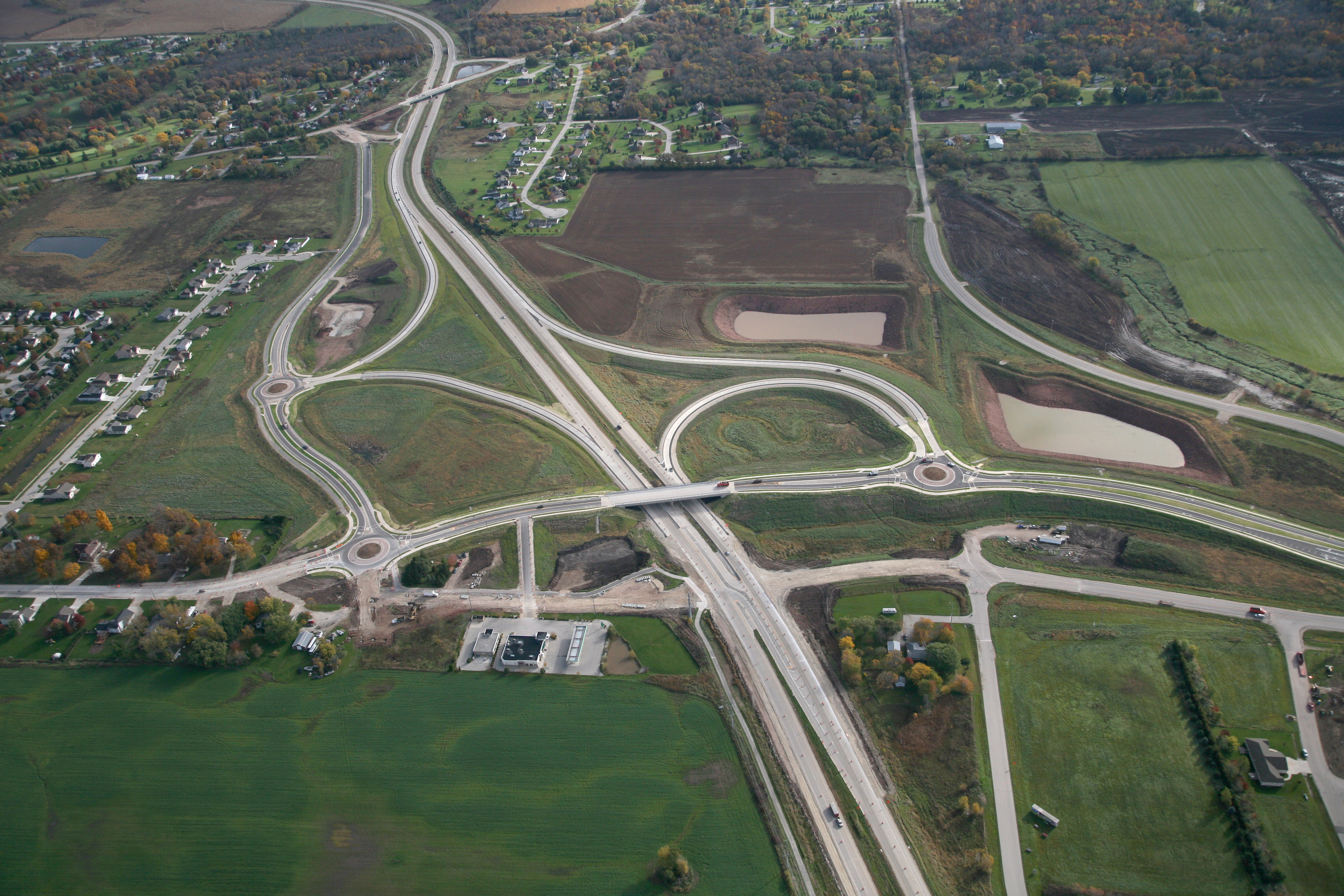Using ICE for Optimal Traffic Control Design
By Camie Ferrier, PE, PTOE, Transportation Service Lead, Randy Carroll, PE, Director, Transportation Service, and Paul Villaluz, PE, PTOE, RSP1, DTM, Transportation Senior Project Manager
There are many alternatives to consider when designing a safe and efficient interaction. An Intersection Control Evaluation (ICE) is a highly effective tool for assessing the site and choosing an appropriate design solution.
ICE – What is it?
An Intersection Control Evaluation (ICE) is a performance-based framework that utilizes a data-driven approach and objective metrics to identify, evaluate, and select the appropriate geometric and traffic control solutions for an intersection. ICE is a well-documented and defensible decision-making process that determines the 'best value' geometric design and traffic control, considering multiple factors, including safety, operations, environmental impacts, constructability, and cost. Traditionally, the use of ICE is at the state level. However, more recently, a growing number of municipal transportation agencies have been developing and adopting ICE policies.

ICE – When is it used?
An ICE is used when developing a new intersection or considering substantial changes to an existing intersection. In many cases, state and local governments have adopted policies that define when to conduct an ICE.
Substantial changes that require an ICE often include:
- Safety and/or operational improvements
- Congestion mitigation or broader corridor improvements
- Traffic control changes
- Access to an adjacent parcel of land or development changes
ICE - What's Included?
The ICE process is flexible and scalable, matching the project's complexity level. The level of complexity is consistent with the level of analysis and project type. However, the fundamental principles of ICE are the same. Typically, ICE includes two stages.
Stage I - Scoping
This first step includes defining the project background, purpose, and need and developing a list of possible intersection types and control alternatives. These alternatives are analyzed individually using quantitative and qualitative performance metrics to determine the extent of their potential to meet the project’s objectives and funding constraints.

Stage II - Alternative Selection
This step objectively compares alternatives brought forward from stage I. Evaluations are based on various performance metrics, including safety, operational performance, multi-modal accommodations, environmental and utility impacts, right-of-way impacts, public input, benefit-cost analysis, and practical feasibility. At the completion of stage II, a report is prepared to document the process and the resulting recommendation.

ICE - Benefits
Transportation agencies that have enacted ICE policies realize many important benefits from the process, including:
- Focus on safety in the decision-making process
- Implementation of more cost-effective solutions
- Consistent documentation and transparency
- Increased awareness of innovative solutions
- Emphasis on objective performance metrics for consistency
- Consolidation and streamlining of existing intersection-related policies
Our transportation team has completed numerous Intersection Control Evaluations for state and local government entities across the county. If you have questions or would like more information, contact our experts.
....
About the Authors
Camie Ferrier, PE, PTOE, Transportation Service Lead
With over 20 years of experience, Camie is a seasoned project manager specializing in traffic and roadway projects. Camie brings a diverse range of transportation and traffic engineering expertise from both the public and private sectors. Her skills encompass intersection capacity analysis, traffic signal design, signal timing, traffic modeling, and optimization, as well as traffic studies, data collection, signing and marking, work zone traffic control, and construction staging. Additionally, her transportation project experience includes urban and rural roadway design, intersection design, roadway rehabilitation, public involvement, construction cost estimates, and environmental documentation, including Section 4(f) and Section 6(f) compliance. In her current role, Camie leads traffic signal design, oversees traffic control aspects of projects, and manages environmental documentation.
Randy Carroll, PE, Director, Transportation Service
Randy has extensive experience in transportation planning and engineering design for both the public and private sectors. Randy’s experience includes traditional design-bid-build, design-build, and construction manager-at-risk delivery methods. Randy specializes in multimodal transportation planning and design, including alternative analysis, operations studies, and final design for arterial roadways, intersection improvements, and pedestrian and bicycle facilities. Randy is well-practiced in the protocols and procedures associated with various funding sources, including local, state, and federal grants. He brings a wealth of local knowledge and long-term relationships with the RTC, NDOT, and local public agencies. Randy is experienced in coordinating and leading consensus-building activities with local government and project stakeholders and developing and facilitating public presentations.
Paul Villaluz, PE, PTOE, RSP1, DTM, Transportation Senior Project Manager
Paul has over 25 years of diverse experience in transportation planning, operations, and design for the public and private sectors. Paul has extensive experience modeling and evaluating transportation systems, developing and designing capacity and operations-based improvements, preparing and permitting complex traffic control plans, and identifying and designing safety enhancements. Paul’s experience includes managing transportation studies for some of the largest master-planned communities in the Las Vegas Valley and preparing Intersection Control Evaluations and other traffic engineering analyses for local and state governments in support of transportation improvement projects. Paul’s diverse experience allows him to identify and implement cost-effective transportation solutions that provide high safety, mobility, and operational efficiency for local governments while creating added value for users, property owners, and the development community.